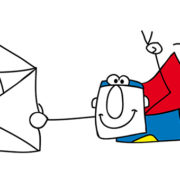Senior Living Sales: How to Cater to the Prospect’s Journey
When it comes to senior living sales and marketing, understanding what your prospects want and need at any given moment is critical. But here’s the thing: The prospect journey is rarely linear. A prospect doesn’t wake up one day and decide to move into a senior living community the next.
For some prospects, they might research and think through options for several years before making the move. Other prospects might be on a tighter timeframe and make a decision within six months. For others, it might be three months.
Plenty of prospects aren’t even buying for themselves, but rather someone they love. Not to mention, many prospects often go back and forth between being “sales qualified” and “marketing qualified.” And, of course, the sales cycle for all of the above has grown more complex, thanks to COVID-19.
The biggest challenge for senior living marketing and sales teams is finding a way to meet each prospect wherever they are on their individual journey. This level of customization was impossible two decades ago. But now, thanks to marketing automation, you can create custom experiences based on a prospect’s actions, interests, and motivations.
How marketing automation enhances the prospect journey
1. Keeps prospects engaged with your brand
Even if the prospect doesn’t always open your lead nurturing emails, simply seeing your name show up in their inbox helps to keep your community front and center in their minds. For those who do open the emails, a personal touch and warm, reassuring tone can go a long way in helping the prospect feel positive about your brand.
2. Entices prospects back to your site
Through engaging lead nurturing emails, you’ll offer helpful content that entices prospects back to your site. Once there, and depending on how well your site is developed, you can engage with them further by offering more content or by providing ways to interact with the site (through live chat or interactive surveys, for example).
3. Automatically matches the right content/message to the right prospect
Again, the main tenet of successful lead nurturing is providing the right content to the right prospect at the right time. You can gather much of this intel through your website opt-in forms and lead scoring. This info will automatically funnel to your marketing automation system. From there, every lead will enter a workflow that makes the most sense for them.
4. Provides real-time insights on what’s resonating and what isn’t
Instead of cold calling all leads (regardless of their level of interest), your sales team can dip into the backend analytics and see how prospects are responding to lead nurturing in real time.
For example, maybe your sales rep notes a prospect who has opened the last three lead nurturing emails and clicked on each offer inside. From there, the person ends up spending 10-15 minutes on the site. This person might indeed be a “hot prospect” and the sales rep might actually get somewhere if they call the person.
In addition, marketing and sales can get a good sense of what type of content works best. Perhaps your prospects love videos. Or maybe they love free guides. You can develop more of what works and less of what doesn’t.
5. Helps move marketing-qualified leads (MQLs) to sales-qualified leads (SQLs) over time
Lead nurturing’s main purpose is to move MQLs to SQLs over time. A thoughtful approach and robust marketing automation can help make sure you achieve this goal.
6. Offers a much less intrusive way for your brand to stay in front of prospects
People will often engage with a brand a half dozen (or even more) times before they’re interested in taking a call with a sales rep. Lead nurturing caters to this shift by providing a much less intrusive way for your brand to stay connected with prospects.
Of course, before you can create the right customized journeys, you need to understand your prospects.
We call this work persona development. Think about your favorite residents. Wouldn’t you want to fill your community full of residents just like them? You can! Persona development helps you identify the traits and behaviors of your ideal prospect. You then develop a customized journey that will attract and nurture more of these ideal prospects.
Remember, when it comes to senior living marketing and sales, it’s not about getting more leads. It’s about getting the right leads—those that match your ideal prospect persona and are a good fit for the lifestyle services that you provide.




